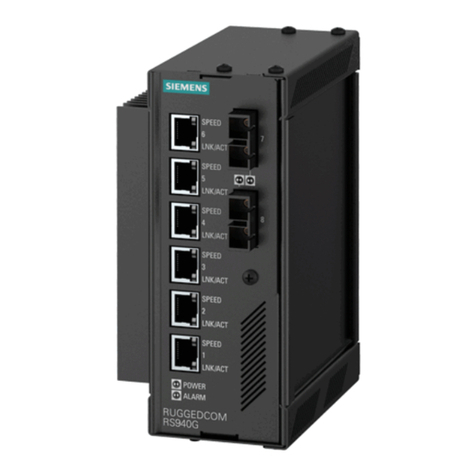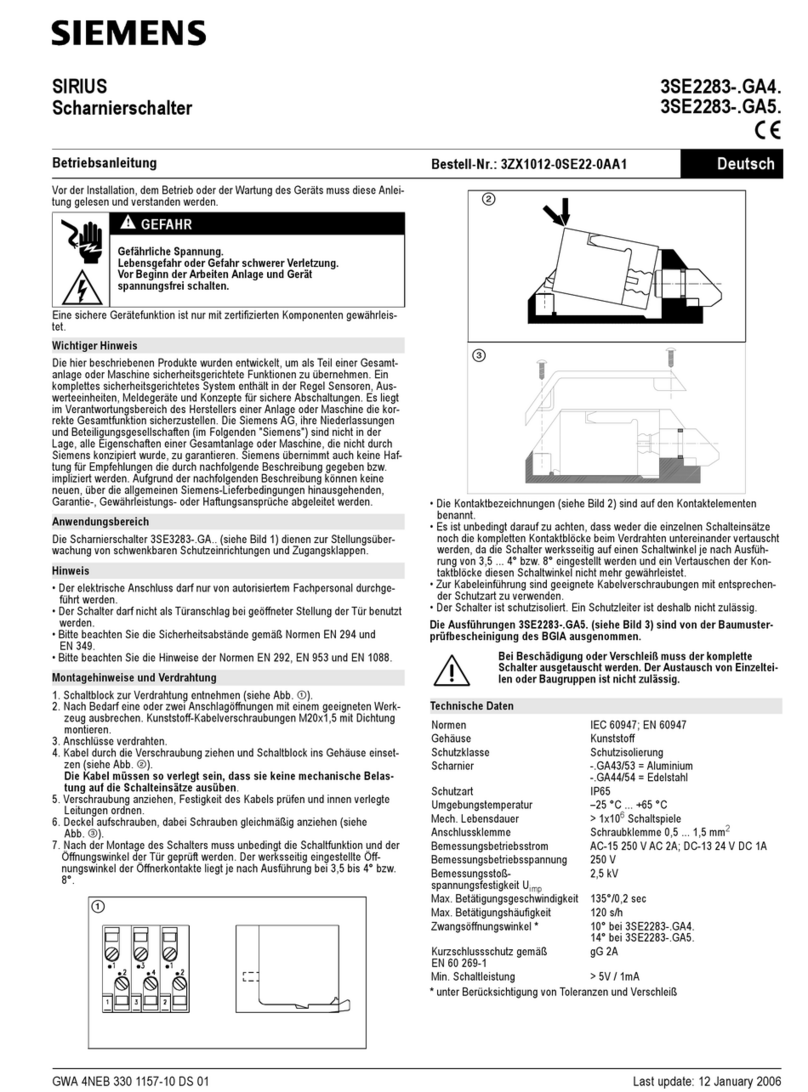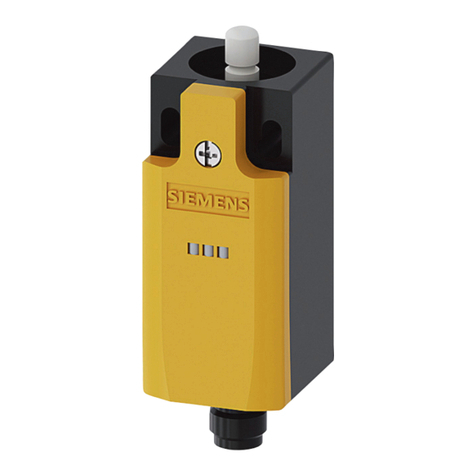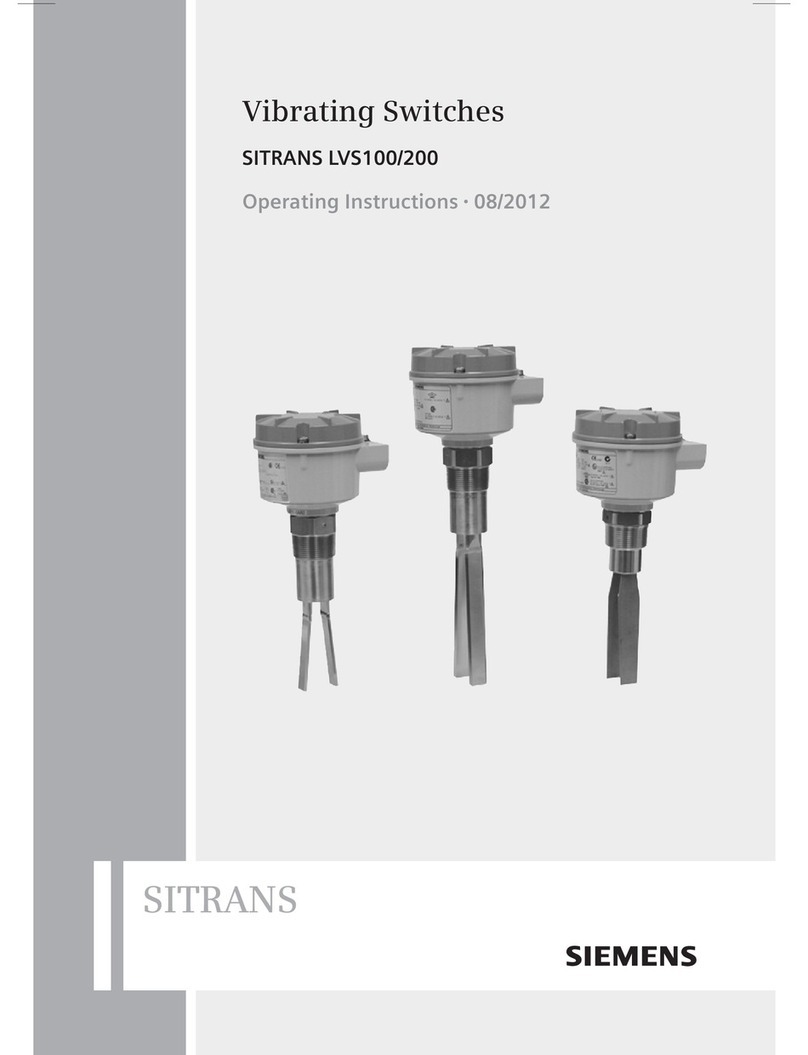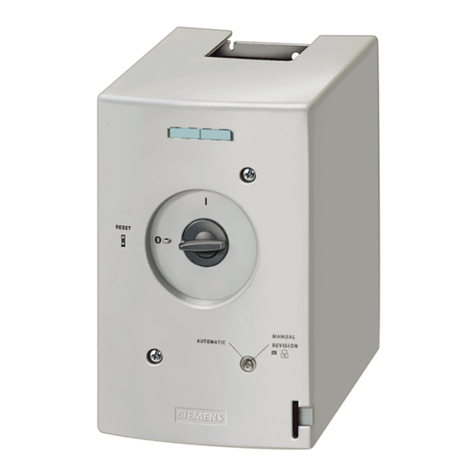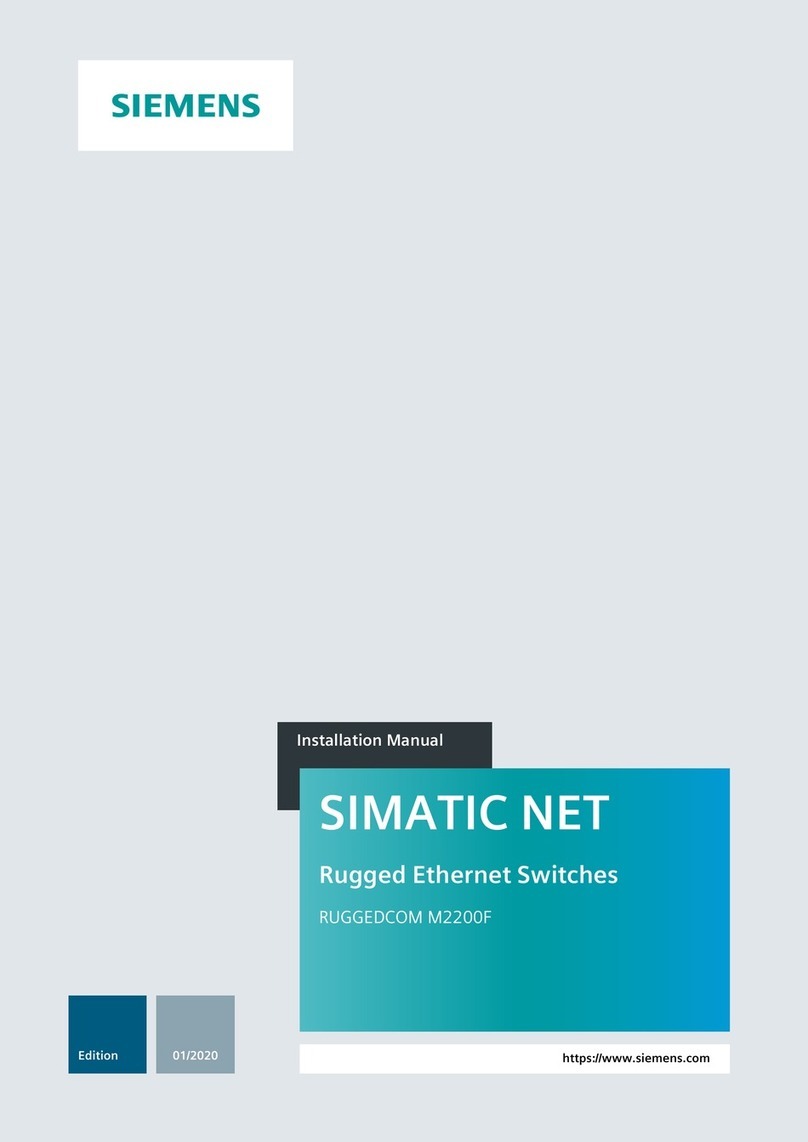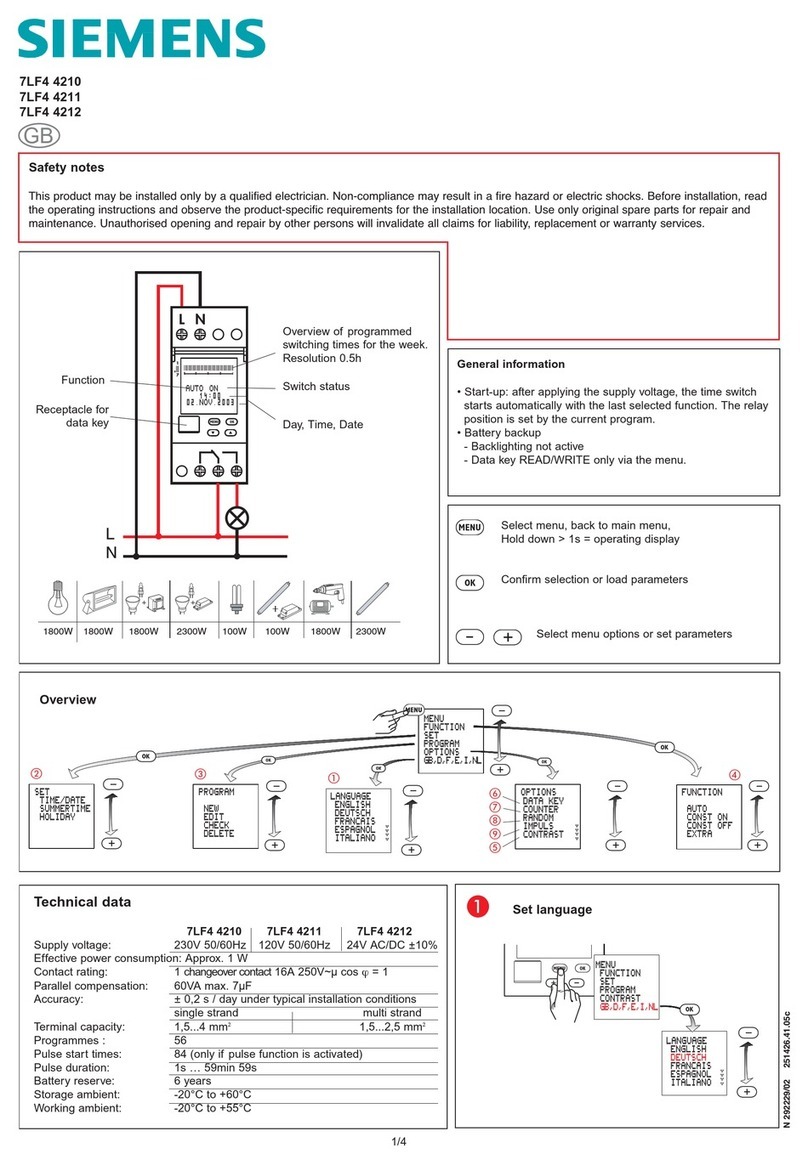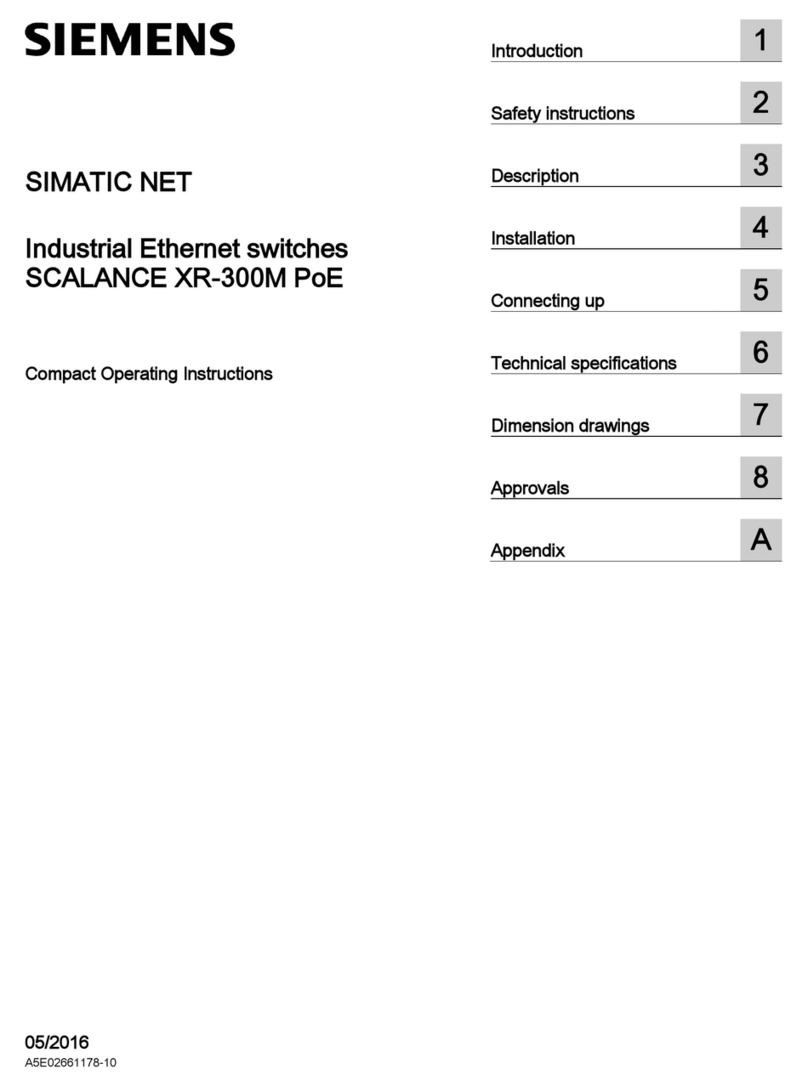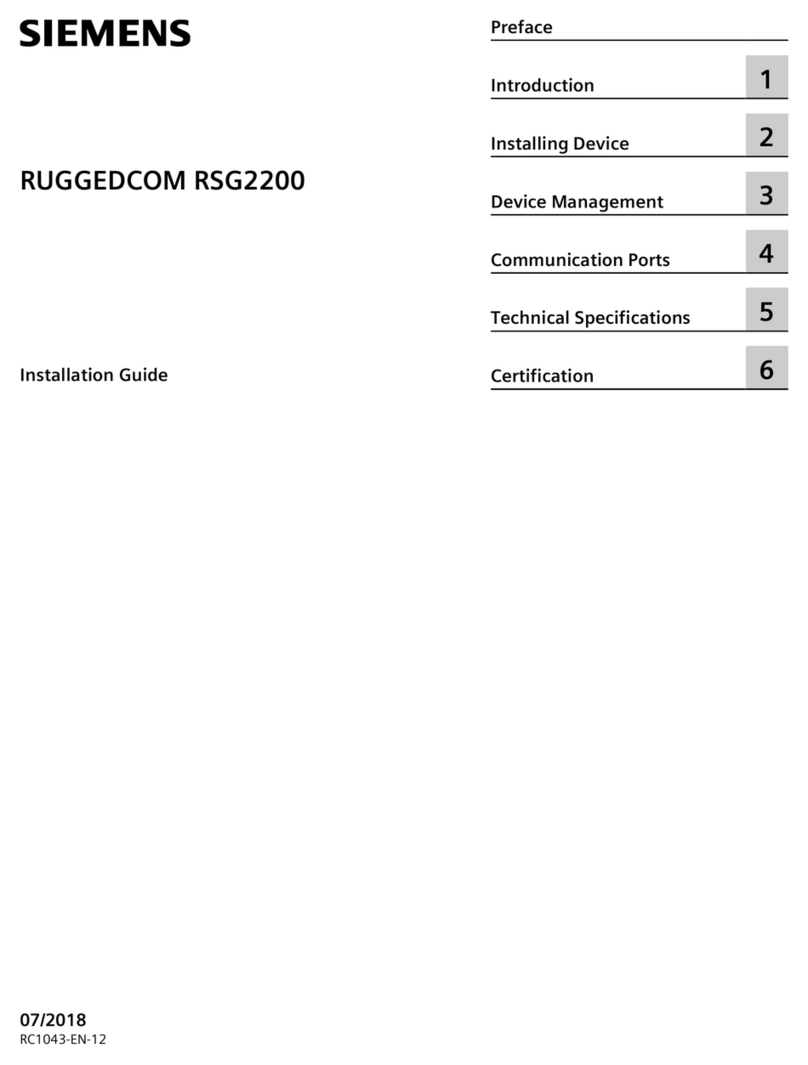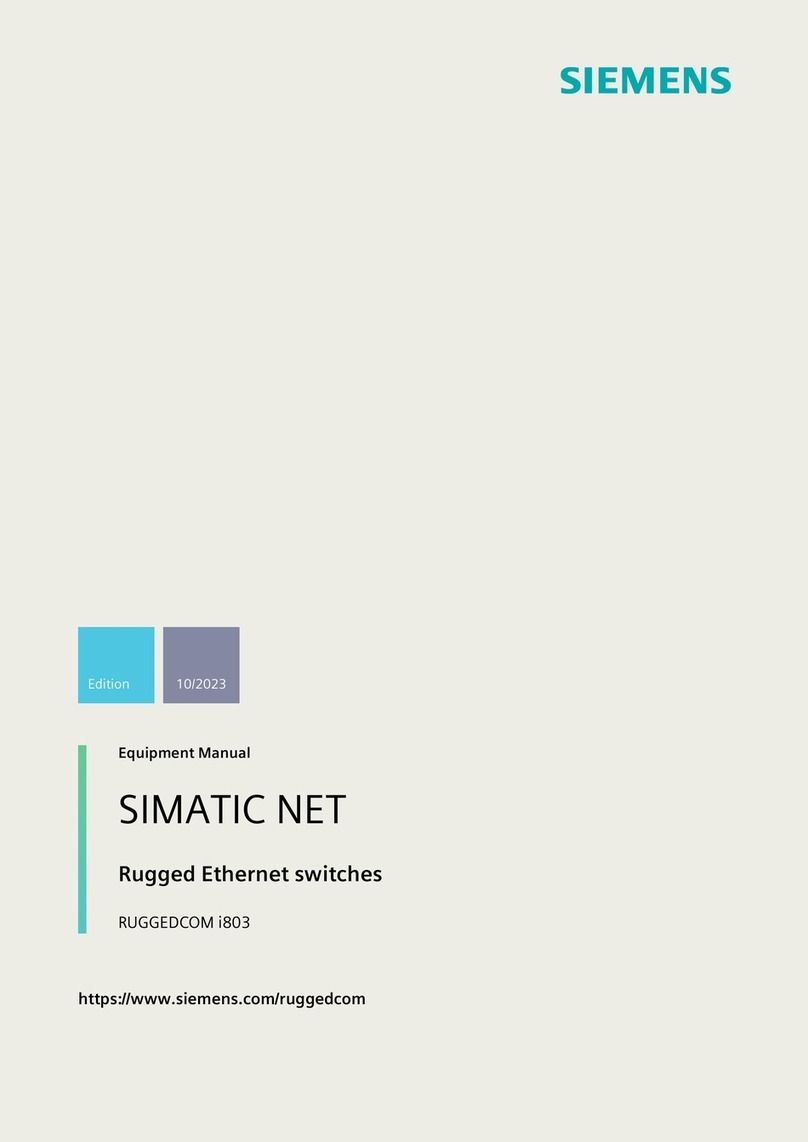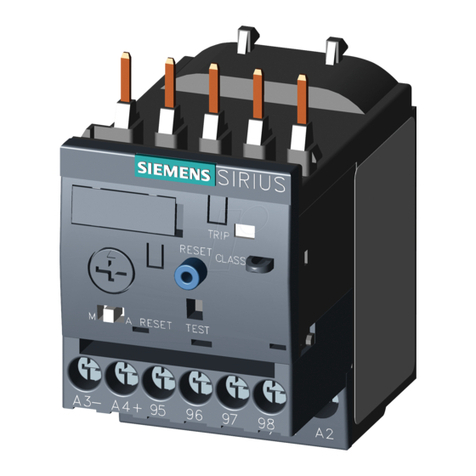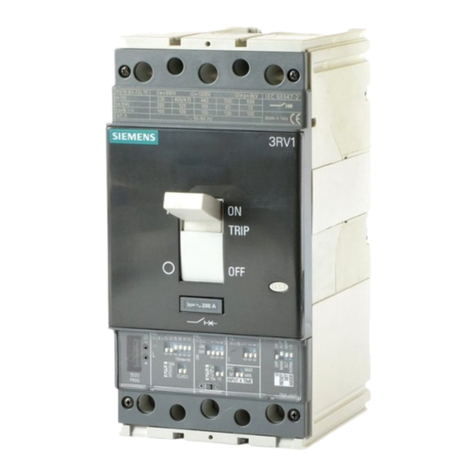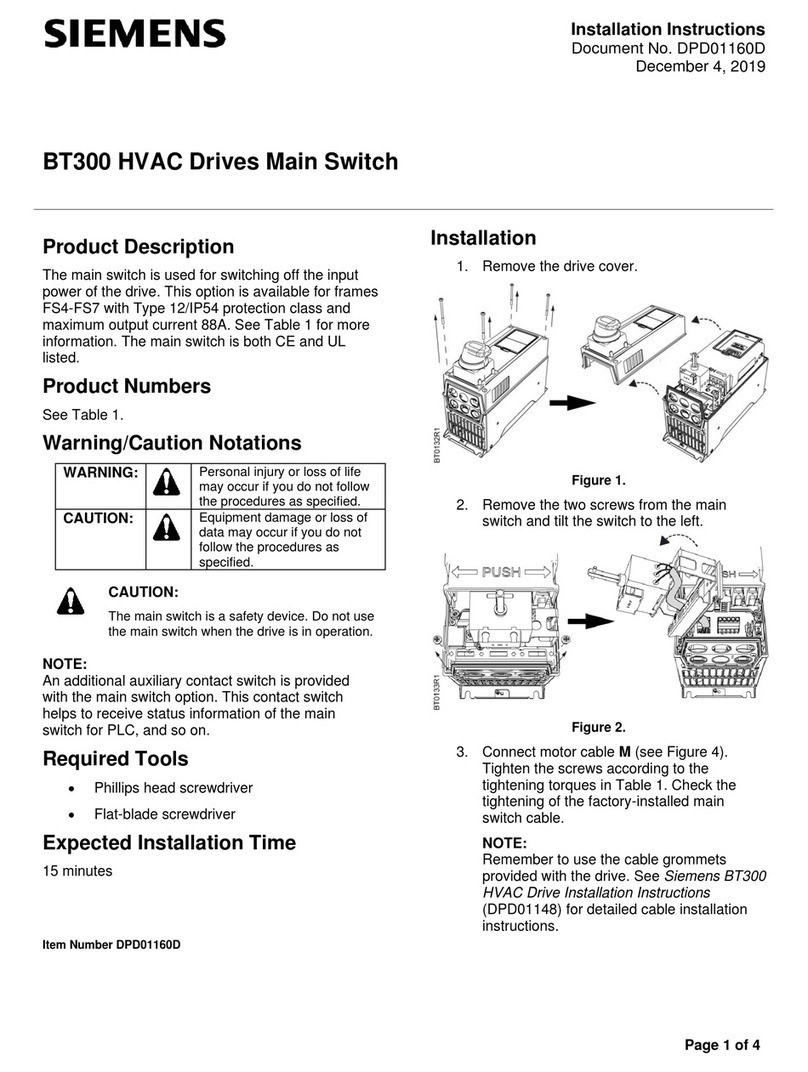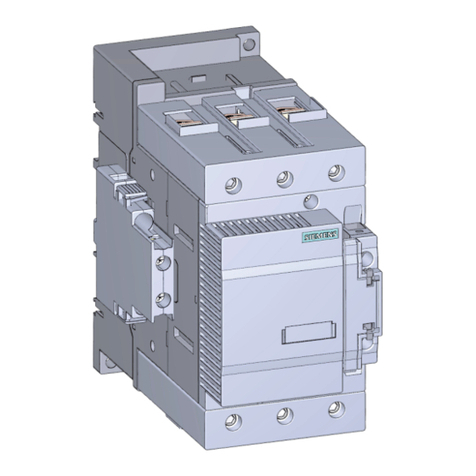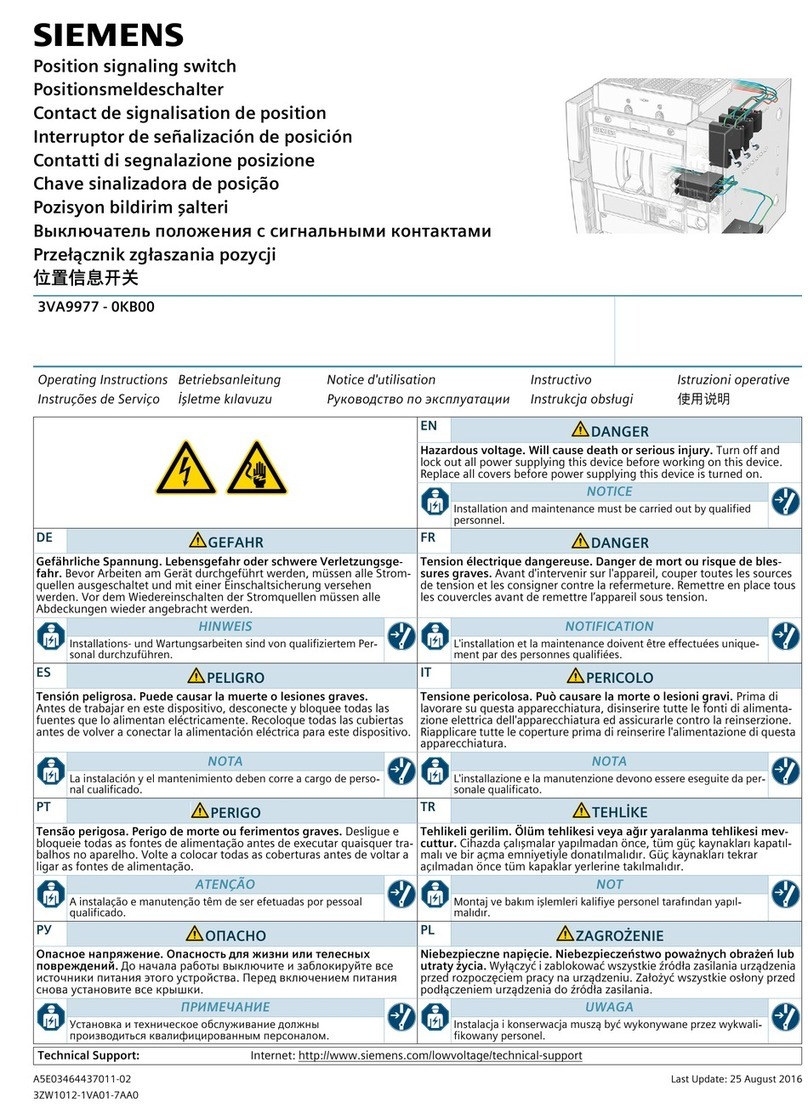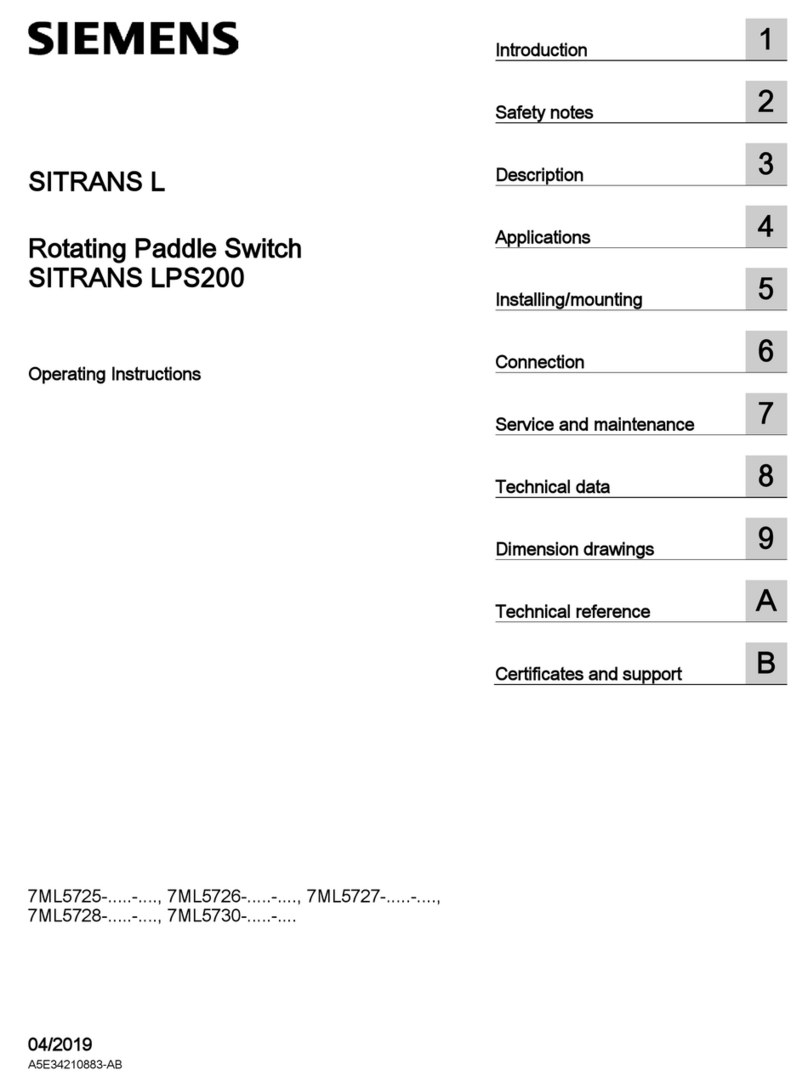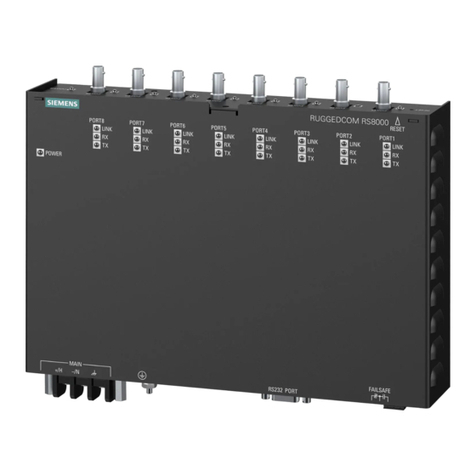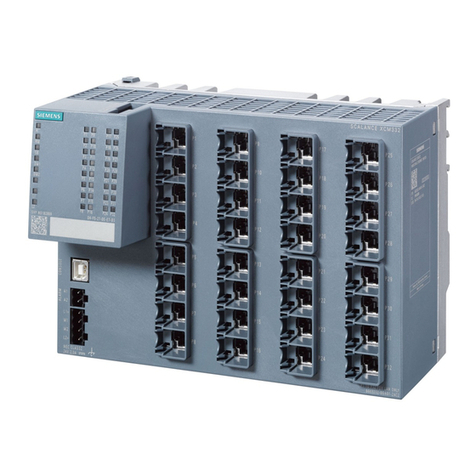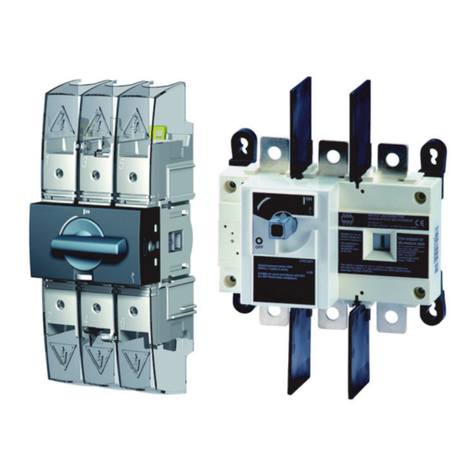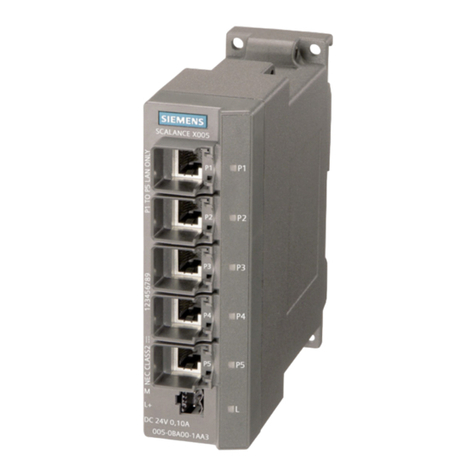
A5E02194350A Seite 2 von 2 page 2 of 2
DS02
B3
Bild / Figure 3a
Bild / Figure 3b
B10
B
Bild / Figure 3c
B11
B12
B13
Bild / Figure 4a
B3
Bild / Figure 4b Bild / Figure 4c
B
B
B
B1
B1
Bild / Figure 5
312 4 56
Bild / Figure 6
Montage und Verdrahtung
Montagehinweise
-Bei der Auswahl des Montageortes ist auf ausreichend freie
Sichtverbindung zwischen den Sendedioden und dem Emp-
fänger zu achten, insbesondere auch, wenn sich zum Betäti-
gen des Senders Personen vor dem Gerät befinden!
-Die Grundplatte des IR-Wandsenders kann wahlweise mit
Schrauben oder mit den beigefügten, doppelseitigen Klebe-
streifen montiert werden.
B1 Wandsender, Seitenansicht
B2 Sicherungsschraube
B3 Halteklammern
B4 Grundplatte, Vorderansicht
B5 Grundplatte, Rückansicht
B6 Horizontale/vertikale Langlöcher
B7 Aussparungen für Klebestreifen
B8 Klebestreifen, doppelseitig
B9 Schutzfolien
B10 Sichtfolie (für Montage auf durchsichtige Materialien)
B11 Typenschild
B12 Schiebeschalter zum Einstellen des IR-Sendekanals
B13 Batteriefach AAA
Montage der Grundplatte (Bild 3)
mit Schrauben
-Durchstoßen Sie mit Hilfe eines Schraubendrehers oder ei-
nem ähnlichen Werkzeug die horizontalen oder vertikalen
Langlöcher (B6) der Grundplatte (B4).
-Befestigen Sie die Grundplatte (B4) mit Schrauben auf einer
UP-Dose (55/60 mm ∅) bzw. mit Dübeln und Schrauben.
mit doppelseitigen Klebestreifen
-Entfernen Sie eine der beiden Schutzfolien (B9) von den
doppelseitigen Klebestreifen (B8) und befestigen Sie diesen
auf der Rückseite der Grundplatte in den entsprechenden
Aussparungen (B7).
-Ziehen Sie nun die restlichen Schutzfolien (B9) ab und drü-
cken Sie die Grundplatte auf einem glatten, staub- und fett-
freien Untergrund.
-Bei Montage auf durchsichtige Materialien (z.B. Glas) wird
zuerst die beiliegende Sichtfolie (B10) aufgeklebt.
Montage des Wandsenders (Bild 4)
-Legen Sie die Batterien in den Wandsender (B1) ein
-Stellen Sie den gewünschten Sendekanal über die Schiebe-
schalter (B12) auf der Rückseite des Wandsenders (B1) ein.
-Montieren sie das Gerät auf der Grundplatte, indem Sie es
oben in die Grundplatte einhängen und unten in die Halte-
klammern (B3) einrasten.
-Sichern Sie den Wandsender mit Hilfe der beiliegenden Si-
cherungsschraube (B2) gegen Abnehmen.
Demontage des Wandsenders (Bild 5)
-Die Sicherungsschraube (B2) an der Unterseite des Wand-
senders (B1) lösen.
-Schraubendreher unterhalb des Doms für die Sicherungs-
schraube ansetzen, den Wandsender durch Hochschwenken
des Schraubendrehers von der Grundplatte lösen und den
Wandsender abheben.
Sendekanal einstellen
Der IR-Wandsender AP422/3 nutzt vier Kanäle zum Senden der
IR-Signale. Dafür stehen dem Gerät 64 Kanäle zur Auswahl.
Der Sendekanalblock wird mit den Schiebeschaltern 1 bis 4 (Bild
6), die sich auf der Rückseite des Gerätes (B12) befinden, einge-
stellt.
Kanalzuordnung entsprechend der Schalterstellungen
Schiebeschalter
Kanal 1 2 3 4 5 6
0 0 0 0 0 x x
1 0 0 0 0 x x
2 0 0 0 0 x x
3 0 0 0 0 x x
4 0 0 0 1 x x
5 0 0 0 1 x x
6 0 0 0 1 x x
7 0 0 0 1 x x
8 0 0 1 0 x x
:
:
61 1 1 1 1 x x
62 1 1 1 1 x x
63 1 1 1 1 x x
x = Einstellung wird nicht beachtet
Allgemeine Hinweise
•Die Bedienungsanleitung ist dem Kunden auszuhändigen.
•Ein defektes Gerät ist an die zuständige Geschäftsstelle der
Siemens AG zu senden.
•Bei zusätzlichen Fragen zum Produkt wenden Sie sich bitte
an unseren Technical Support:
℡+49 (0) 180 50 50-222
(0,14 €/Minute aus dem deutschen Festnetz, abweichende Mo-
bilfunkpreise möglich)
+49 (0) 180 50 50-223
E-Mail: support.automation@siemens.com
www.siemens.de/automation/support-request
Location and Function of the Display and Operating Elements
Mounting notes
-Take care that the line of sight from the transmission diodes
to the receiver is sufficiently free. Especially, if persons are
standing in front of the device in order to use it.
-The base plate of the IR-transmitter can be mounted with
screws or optionally with the included double faced adhe-
sive film.
B1 IR wall switch, side view
B2 latching screw
B3 interlocking clamps
B4 base plate, front view
B5 base plate, rear view
B6 horizontal/vertical long slots
B7 recesses for adhesive tape
B8 double faced adhesive tape
B9 protective films
B10 Non-transparent foil (for mounting on transparent
material)
B11 Label
B12 Slide switches for selection of the IR transmission chan-
nel
B13 battery compartment AAA
Mounting of the base plate (Figure 3)
with screws
-Pierce the horizontal or vertical holes (B6) of the base panel
(B4) with a screw-driver or another suitable tool.
-Attach the base panel (B4) with screws respectively with
dowels and screws.
with double faced adhesive tape
-Remove one of the protection films (B9) from the double-
faced adhesive tape (B8) and stick the tape in the recesses
(B7) on the device's back side.
-Strip off the remaining protection films (B9) and push
the base panel onto a smooth, dustless and greaseless foun-
dation.
-When installing on transparent material (e.g. glass) stick the
transparent foil (B10) on the transparent material.
Mounting the IR wall switch (Figure 4)
-Insert the batteries into the wall switch (B1)
-Select the desired IR transmission channel with the sliding
switches (B12) on the rear side of the wall switch (B1).
-Hang the device onto the base panel with its upper side and
click it into place at the retaining clamps with its bottom side
to attach the device on the base panel.
-Secure the wall switch with the included latching screw (B2)
against unintentional dismounting.
Dismounting the IR wall switch (Figure 5)
-Unscrew the latching screw (B2) on the bottom side of the
wall switch (B1).
-Insert the screw driver below the screw hole for the latching
screw, detach the wall switch from the base plate by swivel-
ing the screw driver up and lift the wall switch from the base
plate.
Select IR transmission channel
The AP 422/3 IR wall switch uses four channels for transmitting
the IR signals. A maximum of 64 channels are available.
The transmission channel block is selected with the sliding
switches 1 to 4 (figure 6), that are on the rear side of the device
(B12).
Channel assignment dependent on the sliding switch positions
Sliding switch
Channel 1 2 3 4 5 6
0 0 0 0 0 x x
1 0 0 0 0 x x
2 0 0 0 0 x x
3 0 0 0 0 x x
4 0 0 0 1 x x
5 0 0 0 1 x x
6 0 0 0 1 x x
7 0 0 0 1 x x
8 0 0 1 0 x x
:
:
61 1 1 1 1 x x
62 1 1 1 1 x x
63 1 1 1 1 x x
x = setting is ignored
General Notes
•The operating instructions must be handed over to the client.
•Any faulty devices should be returned to the local Siemens
office.
•If you have further questions concerning the product please
contact our technical support:
℡+49 (0) 180 50 50-222
(0,14 €/min. from the German landline network, deviating mo-
bile communications prices are possible)
+49 (0) 180 50 50-223
E-Mail: support.automation@siemens.com
www.siemens.com/automation/support-request
